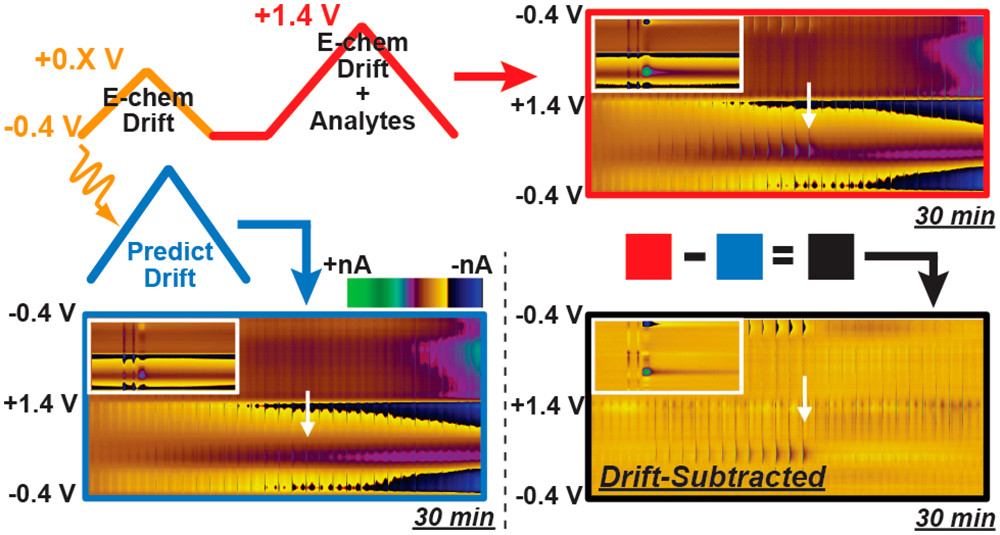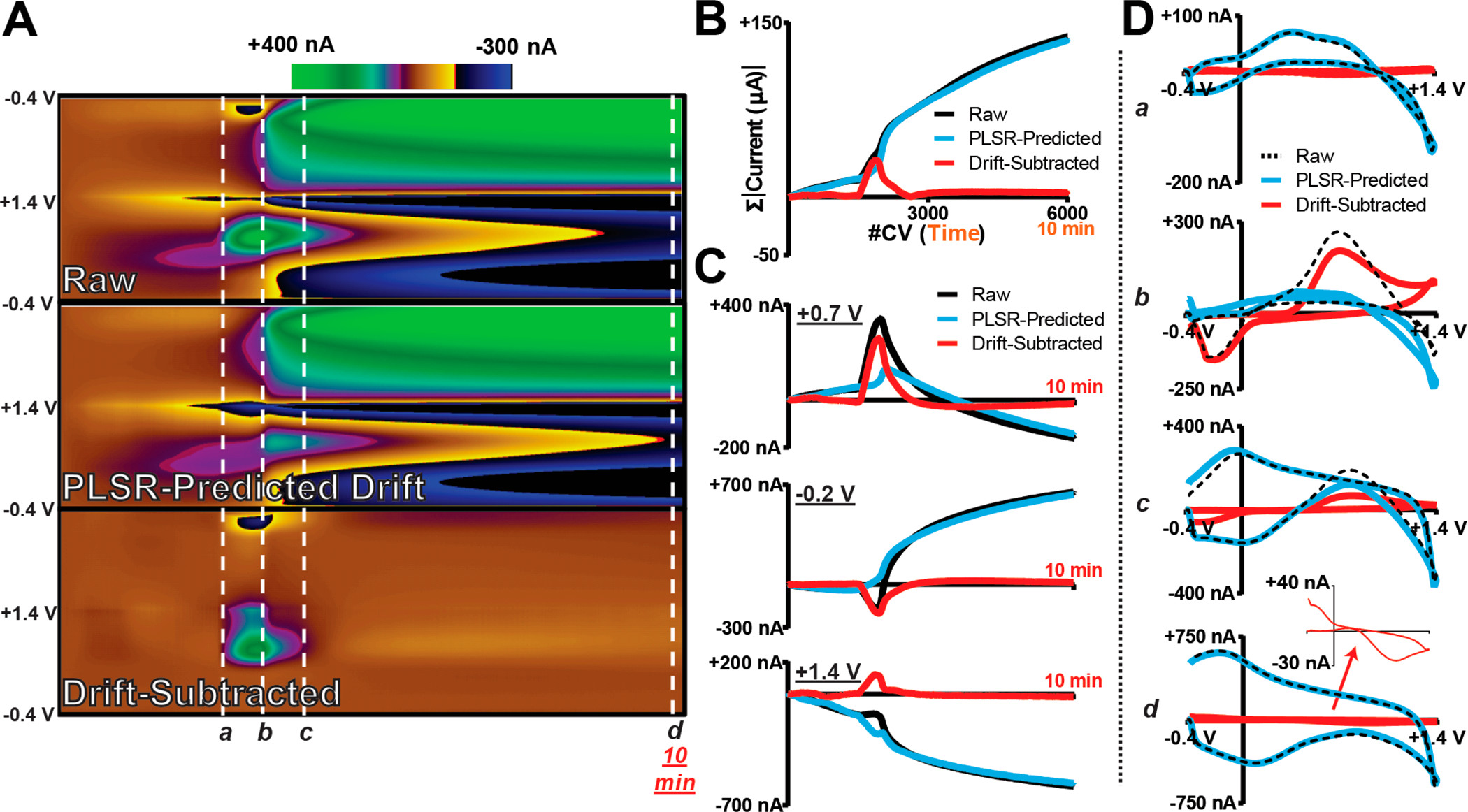We may be biased, but FSCV is a beautiful technique. However, sometimes our signal can get a little muddled with pH shits and drift due to changes in the brain or on our electrode. Our technique uses background subtraction to look at analyte of interest, so background drift can mess up this signal. As such, a lot of neuroscientists will monitor chemical release for a minute or two before collecting a new background to avoid drift problems.
Wouldn’t it be nice to monitor your experiment for longer? Maybe even clean up some of that drift, interference, and pH?
New from the Sombers’ lab, Carl Meunier has a solution for you!
Using a small potential waveform as a predictor of drift, Carl can view drift over time as it occurs without interrupting our signal of interest! Now we can look at dopamine fluctuations over longer periods of time without sacrificing the quick-scan measurements.
This technique not only helps clean up your data but can more accurately report dopamine concentrations during large release events with interference.
Please see our paper in Analytical Chemistry for full details on this exciting, new technique: https://pubs.acs.org/doi/full/10.1021/acs.analchem.9b01083



